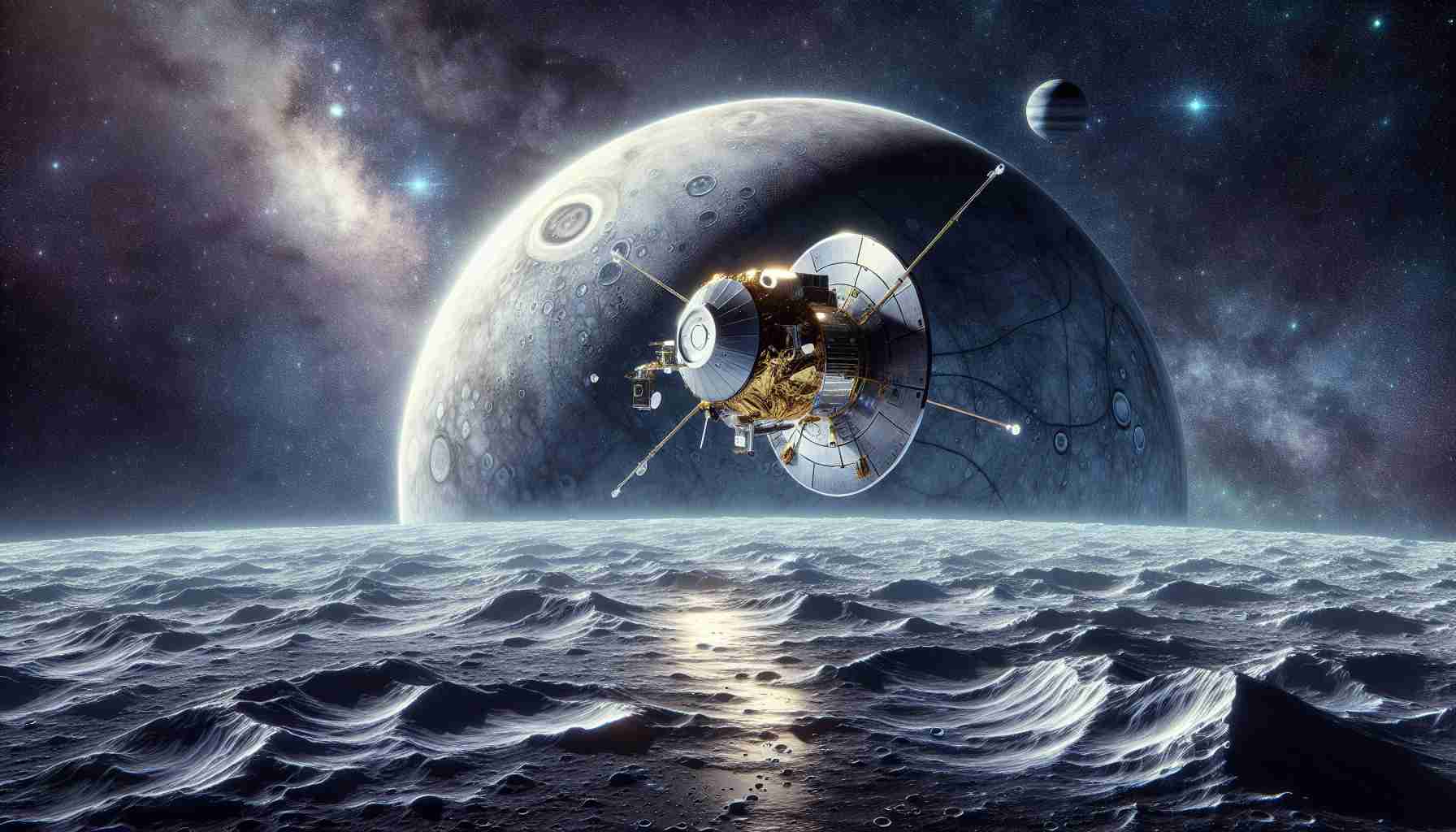
NASA has embarked on an exciting journey with the launch of its Europa Clipper spacecraft, aimed at unlocking the mysteries of one of Jupiter’s most intriguing moons. The mission took off from Kennedy Space Center in Florida, propelled by a SpaceX Falcon Heavy rocket at precisely 12:06 p.m. EDT on the 14th.
Europa Clipper is set to traverse an astonishing distance of approximately 2.9 billion kilometers over the next five-and-a-half years. It is expected to reach the orbit of Jupiter by April 2030, followed by a series of close flybys of Europa to study its surface and subsurface. Scientists are particularly interested in determining if Europa possesses the necessary conditions that could support life.
Measuring 3,100 kilometers in diameter, Europa is the sixth largest moon in our solar system. Beneath its frozen shell, which ranges from 15 to 25 kilometers thick, researchers suspect there is a vast ocean of salty water. This saltwater sea could create an environment conducive to life, making Europa a prime target for astrobiological research.
As the mission unfolds, the Europa Clipper will provide invaluable data that may enlighten our understanding of life beyond Earth. Scientists are eagerly anticipating the revelations that this ambitious exploration could bring regarding the potential for life in our solar system.
Exploring the Depths of Europa: NASA’s Bold New Mission
NASA’s Europa Clipper mission is more than just a remarkable space endeavor; it represents a critical step in humanity’s quest for extraterrestrial life. While the mission’s primary objective is to explore Europa, there are countless questions, challenges, and potential benefits that deserve closer examination.
What are the most important questions surrounding the Europa Clipper mission?
1. Does Europa harbor life?
Scientists are keenly interested in whether the ocean beneath Europa’s icy crust contains microbial life or other forms.
2. What is the composition of Europa’s ocean?
Understanding the salinity, chemical makeup, and potential energy sources of the subsurface ocean is essential for assessing habitability.
3. What geological processes shape Europa’s ice shell?
Recognizing the dynamics of the ice shell can provide insights into the stability and activity of the ocean beneath.
What key challenges or controversies are associated with the mission?
– Technical Challenges: The journey to Europa involves significant technological hurdles. The spacecraft must withstand intense radiation and temperature fluctuations when it approaches Jupiter and its moons, necessitating advanced engineering.
– Funding and Budget Concerns: As with many ambitious NASA projects, the Europa Clipper mission has faced scrutiny regarding its financial resources. Sustaining the budget for such an extensive mission while ensuring other priorities are met is a contentious issue in federal funding.
– Planetary Protection: There are ongoing debates about the responsibility to prevent contamination of Europa with Earth microbes. Achieving a balance between exploration and preservation of potential extraterrestrial ecosystems is vital.
What are the advantages of the Europa Clipper mission?
1. Potential to Discover Life: The mission could yield definitive data that may substantiate the presence of life beyond Earth or provide insights into the conditions that sustain it.
2. Advancement of Space Science: The mission is likely to expand our understanding of icy bodies in the solar system, contributing to broader planetary science and astrobiology.
3. International Collaboration: The Europa Clipper mission fosters collaboration between different space agencies, which can lead to shared knowledge and resources in future planetary exploration.
What are the disadvantages or risks involved?
– Cost Overruns: As with any ambitious project, the risk of financial overspend could divert funds from other critical missions.
– Technical Failures: The complexities of space exploration mean that technical failures can jeopardize the entire mission, potentially leaving questions about Europa unresolved.
– Time Delays: The projected timeline for reaching Jupiter is long, and any unforeseen delays could push back the delivery of crucial scientific data.
In summary, while NASA’s Europa Clipper mission presents an exciting frontier for space exploration, it also raises significant questions, poses challenges, and offers both advantages and disadvantages. The insights gained will shape our understanding of not only Europa but also the potential for life throughout the universe.
For more information on NASA’s missions and explorations, visit NASA.



